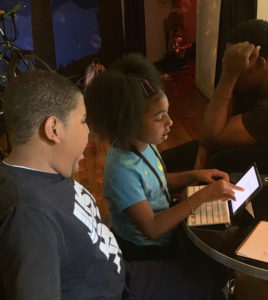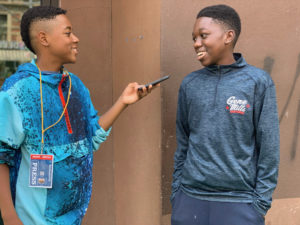 Project Insights and Practicalities:
Project Insights and Practicalities: Community Interaction:
Community Interaction:Potential Reasons Hyper Localized Newsletters Are Not Done More Often
- Lack of resources and staff support: Implementing a youth newsletter program requires dedicated staff time for coordination, training, and oversight. Many residential facilities may not have the resources or staff capacity to take this on.
- Perceived lack of interest or buy-in: Facility leadership may not see the value in a youth-produced newsletter or believe residents and youth would not be interested in participating.
- Concerns over appropriate content: There may be hesitancy about allowing youth editorial control due to concerns over inappropriate or controversial content being included.
- Prioritization of other programs: Residential facilities likely have many programs and initiatives vying for limited resources. A youth newsletter may not be seen as a top priority compared to other needs.
Potential Challenges
- Recruiting consistent youth participation: Sustaining interest and commitment from youth over time to regularly produce a newsletter can be difficult.
- Lack of skills or experience: Youth may need training on writing, editing, design, and teamwork skills to produce a quality newsletter.
- Balancing oversight with youth voice: Finding the right balance between providing guidance to youth and allowing them true editorial freedom could be tricky.
- Distribution and engagement: Even if produced, getting all residents to actively read and engage with a youth newsletter may be a challenge.
While the benefits of involving youth in this way are noted, such as building skills, fostering community, and empowment, the search results suggest implementing and maintaining such an initiative requires dedicated effort that some facilities may not have the capacity for currently. However, the concept seems valuable when the right resources and support are in place.
Could AI Help in Overcoming Some Challenges?
AI could potentially be very helpful in empowering youth to create newsletters in residential buildings. Here are a few key ways AI tools could assist:
Democratizing Content Creation
AI tools like text generators, image creators, and design software could allow youth to easily create engaging newsletter content without advanced technical skills. This democratizes the content creation process and gives youth more agency.
Personalized Learning
AI-powered adaptive learning platforms could provide personalized guidance and feedback to youth as they develop writing, editing, and design skills needed for the newsletter. This allows for more tailored skill development.
Streamlining Production
AI tools could help streamline the newsletter production process, from gathering content to layout and formatting. This makes it easier for youth to consistently produce a high-quality publication.
Expanding Reach
AI-generated translations could help make the youth-produced newsletter accessible to a wider audience, including non-English speakers in the residential community. This amplifies the impact of their work.
Fostering Creativity
AI image and text generators could spark creativity by providing inspiration and ideas for newsletter content. Youth could use AI to ideate stories, characters, and designs to include.
However, it’s important to be mindful of AI limitations and potential risks, such as biased or inaccurate outputs. Proper training and oversight is needed to harness AI’s benefits while maintaining quality and integrity. But overall, AI presents exciting possibilities to empower youth to create meaningful newsletters that build skills and community.